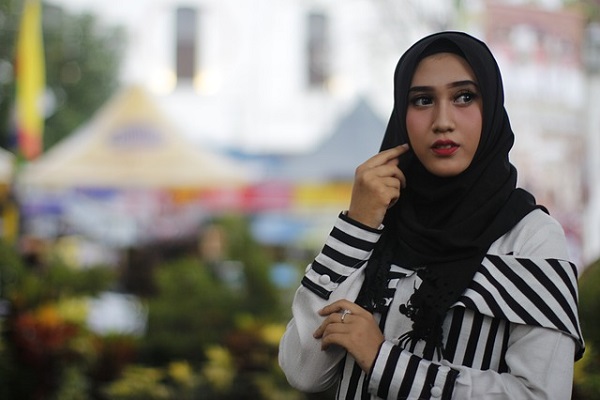
Muslim Fashion: The Beauty of Modesty
- By Kelly Frazier --
- 14 Nov 2018 --

Art museums in San Francisco are in the midst of a Muslim wave with two prominent exhibits featuring Muslim culture.
The de Young Museum in San Francisco is currently hosting an exhibition called Contemporary Muslim Fashion. The museum claims this show to be the pioneer display event showcasing modern Muslim clothing.
Muslim Fashion: The Beauty of Modesty[/tweetthis]
Experts argue that the sheer heterogeneity of Muslim life has put to waste the monolithic concept of "Muslim fashion." There are excellent reasons to arrive at this conclusion. Muslim dominant countries are spread across the world, from the bone-dry West African shores to the wet and humid Straits of Malacca and from Europe's freezing Bosnia to scalding sub-Saharan Africa. Dresses of each Muslim nation predictably vary from the other, not only due to climate, generation, and age but also by religious climate. Ethnic background plays a major role.
There is, however, one common factor. Female Muslim fashion highlights the covering of skin and even the shape is concealed by swaths of fabric. The enticing parts are only slightly accentuated. The hijab is used to cover the hair, and the niqab or veil is used cover the face partially. Women in some countries wear the burka or full body covering, with the wearer seeing the world through slits. The de Young exhibition has entries by top designers and high fashionistas. The demand for haute couture among Muslim clients means both Muslim and non-Muslim high-end fashion designers cater to the market. The latter has quietly developed lucrative business relationships with wealthy women residing in Muslim countries who want high-quality products which must be modest as well.
Absolutely stunning exhibit of Contemporary Muslim Fashion. Do not miss! #fashion #muslimfashion #deyoungmuseum @ de Young Museum https://t.co/kpLidDPgl0
— Sandy Melloy (@sandym415) November 9, 2018
A wealthy woman in an oil-rich Muslim Arab nation enjoys a social calendar of anywhere from 20 weddings to 30 engagements every year compared to two in the West. These women will wear unique designs to every such event. Not wearing modest clothing may lead to a backlash from conservative Muslim circles. One example of such a reaction is on social media when Dina Tokio, the Muslim blogger well known for her fashion writings, informed her readers she decided to stop wearing her hijab. Many in the fashion community criticized her actions pointing out that she made her career on documenting hijab fashion and discarded it when she achieved personal success.
At the Legion of Honor Museum is an exhibition bearing the title Islam and the Classical Heritage, showcasing Arabic manuscripts dating back to the intervening period from the 14th century to the 19th century. The exhibit “brings a larger awareness of how authors, philosophers, and scientists of the Islamic world spread and transformed classical knowledge through the medium of illustrated manuscripts.”


















